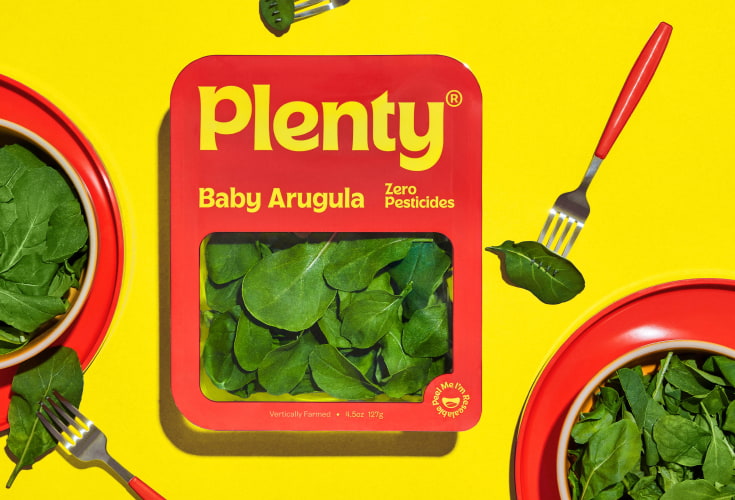Building a New Vision in Food & Fibre

I was honored to speak at the Te Hono Tuangāhuru event held on my home marae (the traditional meeting place of Māori people) at Tūrangawaewae in New Zealand last month.
I want to thank the organizers particularly Missy Te Kanawa, Tina Wilson and Anna Galvan for asking me to share the journey at Plenty with a diverse and distinguished audience assembled under the Te Hono banner. The mission of Te Hono is “Strengthening relationships by linking to the land and connecting to the World”. They operate as a partnership between the leaders of Aotearoa New Zealand’s leaders in food and fiber companies, Iwi (Māori tribes) and Government. They had great sponsorship and support from these groups to bring a remarkable assembly of indigenous leaders together.
As both an investor and technology company CEO of Māori whakapapa (descent), it was a special opportunity to share but also listen and learn more about the phenomenal network and unique expertise assembled over the last decade and Chair Jamie Tuuta did a great job recapping the network’s origins and goals. The meeting also posed some very interesting questions for the future of food and fiber, and from my vantage point, the opportunity for technology to redefine these future options.
Plenty is evaluating opportunities to expand its farm network internationally, and New Zealand is a leading country in both world class food and agriculture, but also through indigenous Māori leadership in long term sustainable development of land and natural resources. Indoor Agriculture is a new paradigm for many at the event, and it was fantastic to share how our technology is helping reshape the growing of food using minimal land, water and natural resources. As we are seeing around the world, fresh produce is subject to major supply challenges with the weather, and while New Zealand is enjoying a fine summer and bumper crops, just a year ago Cyclone Gabrielle wrought havoc on farmers and communities alike pushing prices through the roof. As in other parts of the world, the kiwi customer wants year-round quality and availability, and there is also a strong push for food free from additives, pesticides and for clean nutritious, and affordable food.
The Māori organizations and businesses present face challenging times ahead with pressure on water, emissions, and land use as well as financial hurdles for investing in Ag and Food posing some big questions of management and governance. A recurring question is “Where do we invest to be ready for, and to shape these future scenarios?” Building a position beyond commodities has been difficult and elusive for the agrifood sector in an economy dependent on food and fiber for its livelihood and many jobs. Getting out of the commodity trap isn’t easy. We know at Plenty that to earn your place on the shelf, you need a differentiated product. Primary producers have struggled to get pricing power – building unique IP including unique products and branding, requires discipline and investment that has been hard to tie down, notwithstanding there are some amazing examples of cooperative investment that are making their way – Tohu in wine, Miraka in dairy products, the Miro berry cooperative and more.
A new coalition government in NZ is also trying to establish economic goals for the economy (doubling exports within the next decade) but without a clear and compelling strategy on how to do this – yet. The narrative around increasing value not volume has been around a long time and across successive administrations – but has proven harder to execute. While agriculture exports still comprise the largest contribution to forex earnings, the technology sector has pushed into second place, and many Māori producers are growing in their use of agritech on farm and forestry land. In considering where the next opportunity is for Te Hono and its network to contribute to this debate, I can see many exciting options for reshaping the narrative. The last decade has seen massive investment in the USA (and globally) in areas from alternative protein, plant-based foods, indoor agriculture, regenerative agriculture, renewable energy for Ag, water saving and management, and much more. Not to mention the rise of omni-channel, delivery and meal kits as well as food as medicine/health products. Investing in these new waves of innovation takes a lot of expertise, patience and not a little courage! From where I sit, having invested in many of these new technology segments and now leading Plenty, I see unbounded opportunity for Māori to take new steps in these spaces, to build sustainable and profitable ways ahead.
Our hosts at Tainui Group Holdings also showcased their latest win in the Ruakura superhub distribution center, that alongside their retail and hospitality investments has seen them grow into a multi-billion purpose driven enterprise with remarkable social, environmental and economic returns. I was proud to be home to see these achievements and kudos to Tukuroirangi Morgan, Donna Flavell and Hinerangi Raumati for their inspiring narratives. It is a potent reminder that the private sector and within that Māori, not government that has the burden of lifting our productivity and future stewardship of our land and natural resources – and indeed our people. This event provided a very different lens for how a company like Plenty can partner and contribute to the new paradigm the Food and Fiber sectors.
The only thing scarcer than capital is Trust – and the Te Hono network has built an open and constructive dialogue. As a supporter from afar, I think its now time to do something with that invaluable asset and we look forward to Plenty continuing to develop new partnerships globally.



